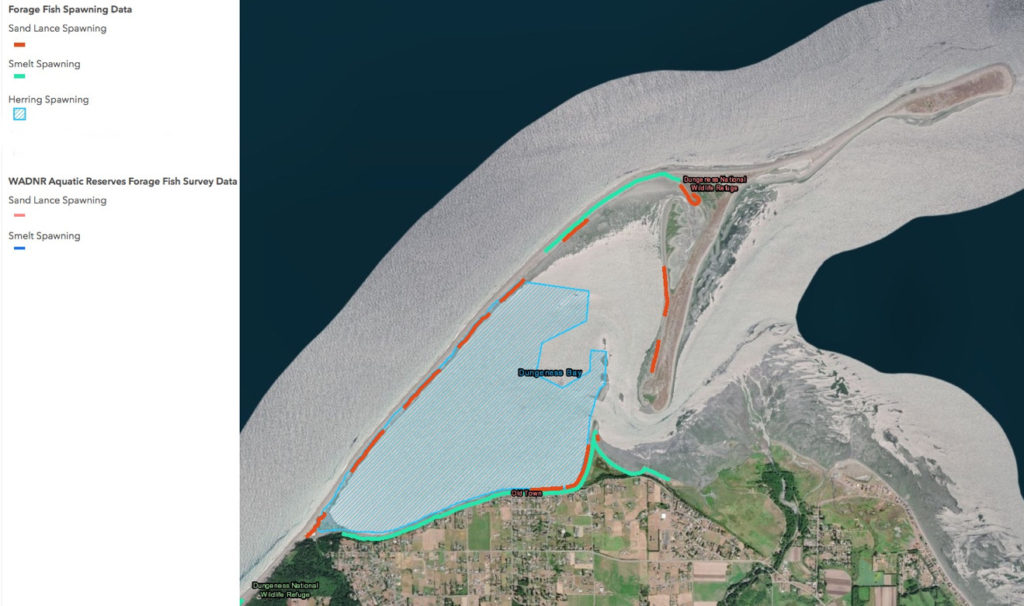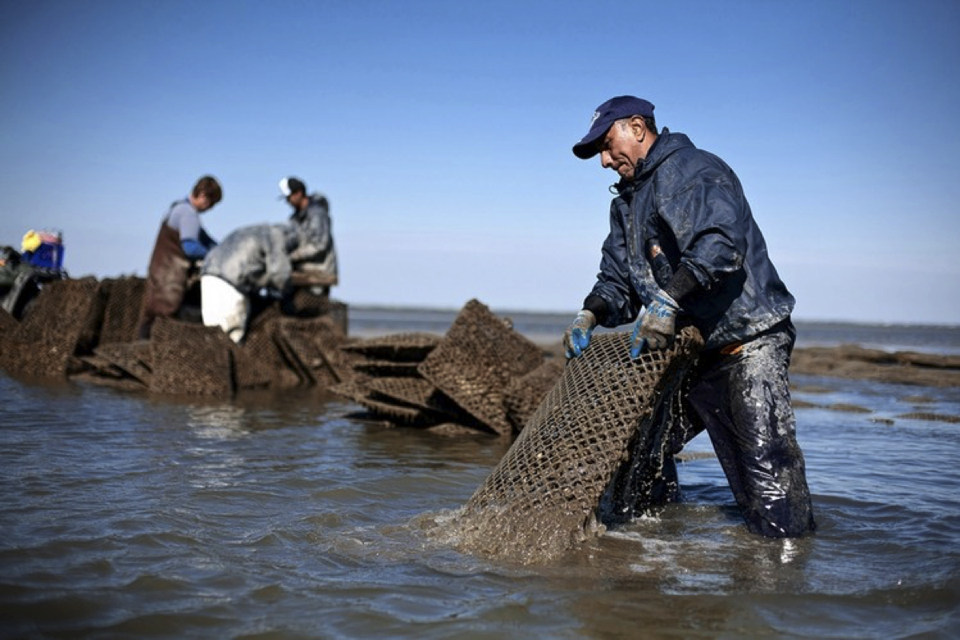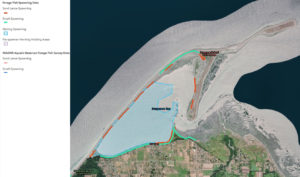Map and Photos of Dungeness Refuge

Click on image above to open larger format of this WA State map of salmon forage fish spawning areas within the Refuge.

Dragging oyster bags damages habitat.
Species observed with the Refuge include:
Partners In Flight includes Brant on their Yellow Watch List for species with restricted ranges. The Refuge supports one of the largest Brant haul out sites in Washington state. The eelgrass beds provide an important migrant staging & winter habitat for up to 3,000 Brant annually.
Dunlin have suffered habitat loss & degradation in many migratory stopover sites over the years, with loss of habitat most severe on wintering grounds. The Refuge is an essential stopover & wintering site.
Black Oystercatchers nest on the shores of the Refuge, & feed in the mudflats. They’re on the Yellow Watch List for species with restricted ranges. Like other ground-nesting shorebirds, Oystercatchers are sensitive to beach disturbance by humans.
The Refuge’s mudflats and coastal lagoons are an important source of food for Least Sandpipers as they migrate between wintering grounds in Central America, & summer breeding grounds in the subarctic.
Sanderlings breed in the high arctic, but non-breeders may stay in the refuge year-round. Their populations are declining and they are listed as a species of high concern by the Western Hemisphere Shorebird Reserve Network.
Sand lance and herring spawn in the proposed oyster farm site, making up a good portion of Pelagic Cormorants diet.
Rhinoceros Auklets also feed on sand lance & herring spawning in the proposed oyster farm site.
Pigeon Guillemots forage in Refuge waters & nest in the bluffs west of the Spit.
Glaucous-winged Gull & Heermann’s Gull are on the Yellow Watch List as a species with restricted range.
Between 200,000 & 250,000 Bufflehead are shot yearly in the U.S, & Canada. The Refuge provides protection for some.
Great Blue Herons rely on foraging opportunities along Dungeness Bay shorelines in the Refuge.
Bald Eagles can be seen roosting, & hunting within the Refuge. They’re listed as a “Species of Greatest Conservation Need“ in Washington state.

